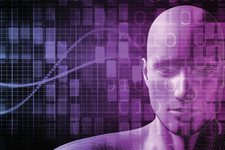How computers learn languages
We Need to Talk

Whether through voice assistants, chatbots, or the automatic analysis of documents, rapid developments in AI are helping speech technologies make inroads. But how does AI manage to understand the subtleties of human language?
Language is the medium through which people communicate and express their thoughts. It is an ancient dream of mankind to be able to communicate with a machine (for example, just watch 2001: A Space Odyssey).
Meanwhile, science has come a bit closer to this vision. The box entitled "Sample Dialogue with LaMDA" contains a conversation with the Language Model for Dialogue Applications [1] (LaMDA) dialogue model. It was assigned the identity of a Weddell Seal in the first line. As you can see, LaMDA can give grammatically and contextually correct answers and even play with the meanings of words. But how does a computer system manage to achieve language fluency?
To understand language, the system needs to know the meaning of words. For this purpose, each word is represented by a long vector of 100 to 1,000 real numbers. This vector is known as embedding. Now, for example, because "sofa" and "couch" both refer to upholstered seating furniture for several people, their embeddings should also be similar. This means that very similar numbers should be found at the same positions of the vector. Other words such as "dive" have very different meanings, so their embeddings should be very different from the one just mentioned.
[...]
Buy this article as PDF
(incl. VAT)
